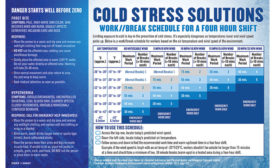Featured on Home Page
This is the first in a three-part series
Read More
The benefits of holding CSP® & CIH® certifications
Time to bridge the expertise gap
October 13, 2017
Lessons from a semi-driverless vehicle
You can get numb to tech warnings & stimuli
October 12, 2017
Become a Leader in Safety Culture
Build your knowledge with ISHN, covering key safety, health and industrial hygiene news, products, and trends.
JOIN TODAYCopyright ©2025. All Rights Reserved BNP Media.
Design, CMS, Hosting & Web Development :: ePublishing










